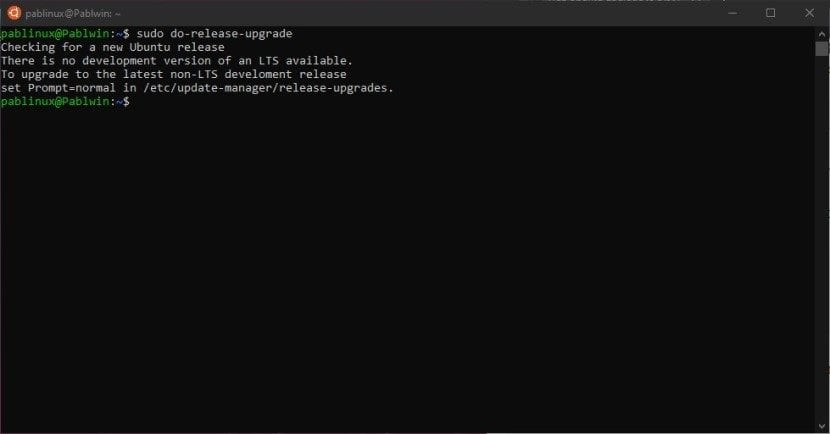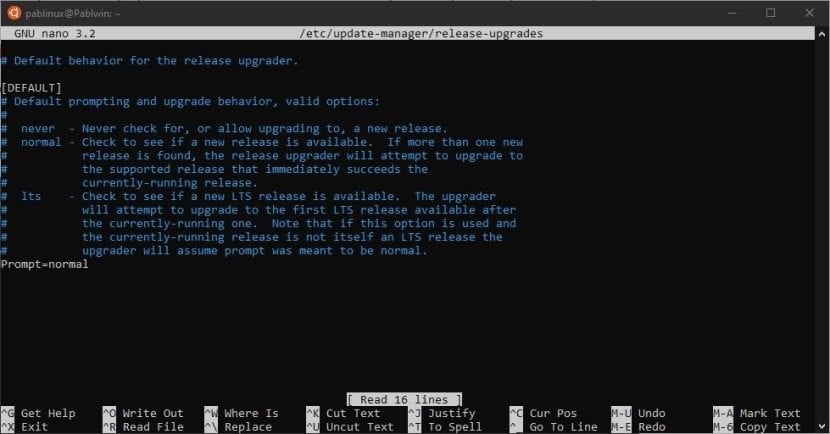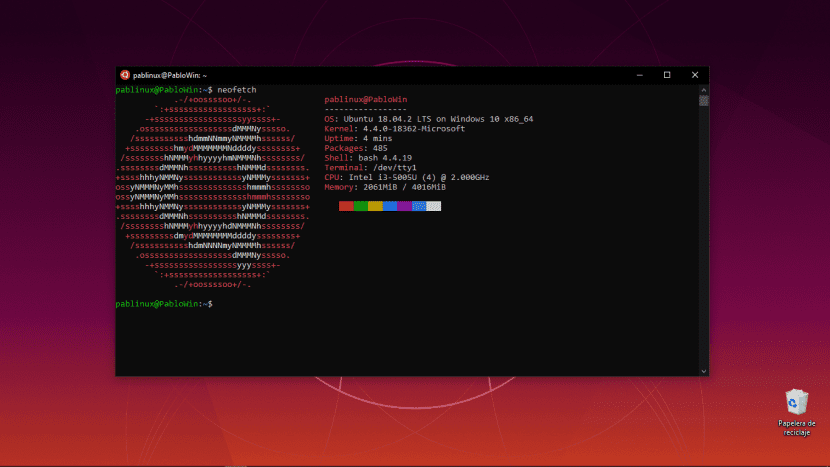
Currently, when we try to install Ubuntu on Windows 10 by means of WSL (Windows Subsystem for Linux), what we see as available in the Microsoft Store are two LTS versions (18.04 and 16.04) and a third that… well, it is also an LTS. The most we can install from the official Windows store is Bionic Beaver, but can we update to a more recent version? The answer is yes, and at the time of writing this article we can upgrade to Disco Dingo.
Doing so is very simple. We only have to remember the first command so that our Ubuntu terminal give us the necessary clues to follow the process. The most difficult thing will be something that does not require our attention: be patient until all packages are updated. Here we explain what we have to do.
Update our WSL to the latest version by editing a file
The command we have to remember is the following:
sudo do-release-upgrade
When entering it, it will give us an error / clue like the one in the following screenshot:

What it is telling us is that we are already using the most updated LTS version and that if we want to use the latest non-LTS version we have to configure the file that mentions us changing the line «Prompt = LTS» to «Prompt = normal». To do so, we type this command and press enter:
sudo nano /etc/update-manager/release-upgrades

In the screen that opens, we have to make the aforementioned change, press Ctrl + X, then "Y" and accept with enter. Finally, we put the first command again to perform the update. And we go for coffee, because it may take a long time. More seriously, it may be a good idea to leave the computer working alone while we do something else. But we can't be too far because we will see a bug with LXD (WSL is not yet supported by the package snapd) and we will have to confirm / accept some changes.
Since this article has been short and its instructions simple, I would like to take the moment to mention that WSL has some integration with Windows, that is, we can use Linux commands directly from PowerShell or from the "Run" launcher. You just have to remember to put "wsl" in front without the quotes, so a command like updating the packages would look like "wsl sudo apt update".
Logically, WSL is not the same as using Linux as a native, but it is a useful little toy that many users like. Are you one of them?
